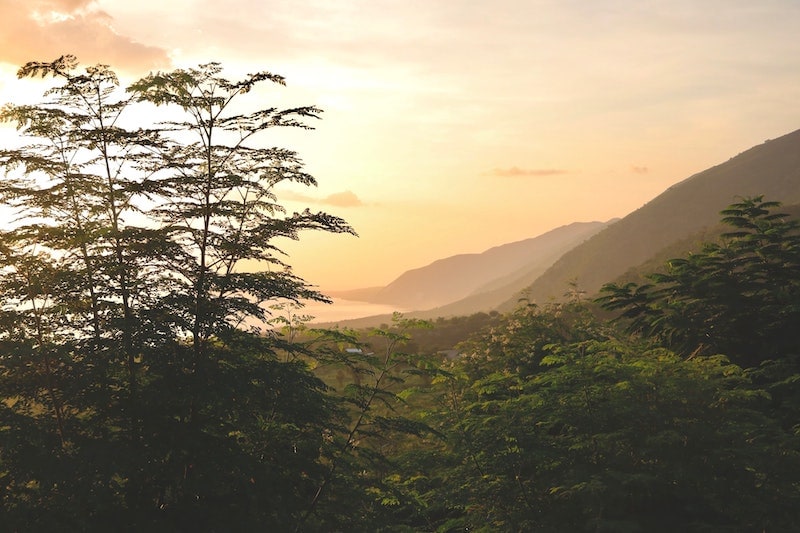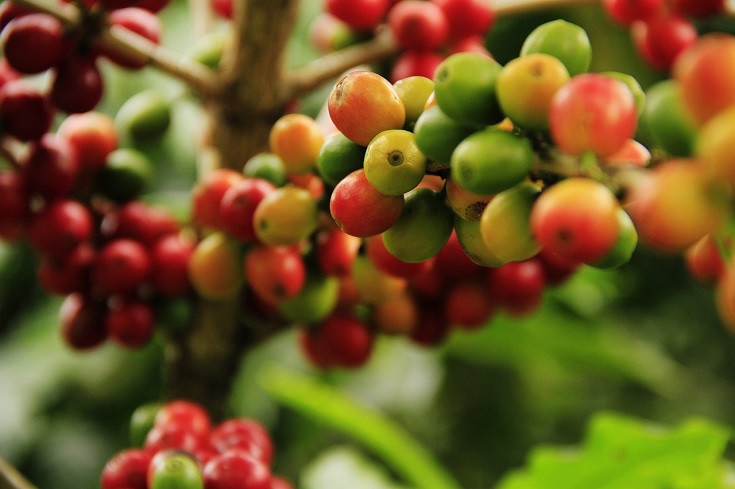
Coffee is a multi-billion-dollar industry, countries competing to be the best exporter of the beloved coffee bean. While Brazil has been the king of coffee production, plenty of other countries could take over, or back, that title. At one point in history, Haiti was the dominant force in coffee production. Today, coffee has deep roots in Haitian history and culture, and their carefully cultivated beans are enjoyed throughout the world.

History of Coffee in Haiti
Coffee was not part of Haitian culture or farming until the early 1700s, brought by French naval officer de Clieu when the country was still a French colony. According to the stories from history, he got ahold of some seedlings to bring the New World and kept the seedlings alive on the ship with his water rations. Within a few decades, Haiti became a coffee-cultivating powerhouse, climbing to the commercial food chain’s top.
By 1788, Haiti was supplying half the coffee in the world. Coffee became a pivotal crop to farm and still is today, but not without some trouble.

The Rise and Fall of Haiti’s Coffee Production
While the cultivation started strong, a series of terrible events sent Haiti’s coffee production tumbling down. In 1791, the Haitian Revolution was brought on by the deplorable conditions the plantation slaves worked and lived in. The revolt caused multiple shutdowns, which inevitably stalled their coffee production and exportation.
More misfortune and terrible events struck the country, which in turn impacted their coffee cultivation. By the late 1850s, farming and cultivating were almost at a standstill, and their coffee production was reduced by nearly 45%. In the 1990s, the United States’ trade embargos caused significant economic destruction to Haiti’s coffee exportation. Throughout history and up to this year, Haiti’s coffee cultivation has wavered in success and failure multiple times.
Environmental Impact on Haiti’s Coffee Cultivating
If that wasn’t enough, Haiti has suffered from natural disasters and environmental problems, furthering the country’s domination of the coffee market. A 7-magnitude earthquake devastated the land in 2010, killing over 300,000 people and destroying the farmlands. Other problems like deforestation have caused issues, while refused coffee beans due to climate conditions also affected Haiti. Throughout the years and tragic events, Haiti’s once-historic coffee exportation rose and fell continuously.

Haiti Coffee Production
Thankfully, through sheer perseverance and the fair-trade market, Haiti’s beloved coffee is making a comeback in the coffee bean industry once again. Haiti’s coffee production has been increasing again, their market mostly in premium and high-end coffee brands today. With their high-elevation farming creating some of the best Arabica beans, Haiti is proud to offer a real gourmet coffee experience.

Types of Coffee Beans Exported from Haiti
Out of the four main types of coffee beans sold, Haiti grows and specializes in the cultivation and roasting of Arabica beans. Famed for its low acidity and sweet taste, the Arabica bean is the most produced coffee bean globally. Arabica is found in coffee shops and is especially popular in North America due to its delicate flavor profile. It’s also the most finicky of the coffee plants to grow, but the plantations at high elevations in Haiti are perfect for them to flourish.
How Coffee is Grown in Haiti
When coffee first arrived and farmed in Haiti, coffee plants rarely exceeded 5 or 6 feet in height. The small plants made it much easier to harvest, which in turn made the plantation easy to maintain. Some farms remain this way to keep production up the speed, but other plantations were not as lucky. Due to the economic strife and constant setback, some farms were left abandoned, and the coffee plants quickly grew to alarming heights. Farmers won’t prune them back or replace them as long as they’re producing fruit, mostly in fear of losing a fruit-bearing crop in a time where every plant counts.

The Coffee Processing Method
Coffee in Haiti is mostly produced in the high elevations of their mountain regions, which is where the coffee plant thrives with the climate. It is grown by the season and harvested, which is always hand-picked. Haitian coffee is either processed by the dry method or the wet method, depending on the region. The wet method gives them the blue hue of the beans, giving them the name Blue Mountain coffee or Haitian Blue Mountain coffee. They’re similar in process to Jamaican Blue Mountain coffee beans, but the flavor profiles are slightly different.

Haitian Coffee Flavor and Taste
Haitian coffee is famous for its mellow taste and notes of chocolate, usually medium or dark roasted. It’s smooth to drink and is low in acidity, with a natural sweetness to it. The Blue Mountain coffee grown in the mountainous regions offer an even smoother and flavorful experience, creating a strong demand for more in the high-end coffee market.
Coffee in Haitian Culture
Regardless of its successes and misfortunes in the coffee export market, it has always remained strong in the culture. Even though coffee was at first only enjoyed by the colonists, it’s now a staple drink in the country. It’s deeply rooted in Haiti’s culture, from the elevated farmlands to the roasters in the towns. When guests are over, a hot cup of freshly roasted, Haitian-grown, and brewed coffee is always offered as a sign of respect and appreciation. For farmers in the highest lands in Haiti, coffee is a multi-generational lifestyle and will remain that way for years to come.
How is Coffee Usually Served in Haiti?
Coffee is a major part of people in Haiti, and it is part of their history, so coffee is something to be cherished and enjoyed there. Coffee is usually served with no cream or milk, but it may be served with sugar. When coffee is served with milk or cream, it’s called “café au lat,” which is due to the French colonization of Haiti.

Final Thoughts
Coffee has a wild history with Haiti and the farmlands, from becoming the best coffee grower in the world to almost disappearing from the market completely. Haiti hasn’t climbed to the top again yet, but they are slowly pushing through the economic mess they’re still in. Coffee is still an important part of Haiti’s lifestyle, especially for the multi-generational farmers in the mountains. Even with the countless setbacks, Haiti still produces some of the best and most exquisite coffee in the world.
RELATED READS:
Featured Image: Golden Brown, Shutterstock















